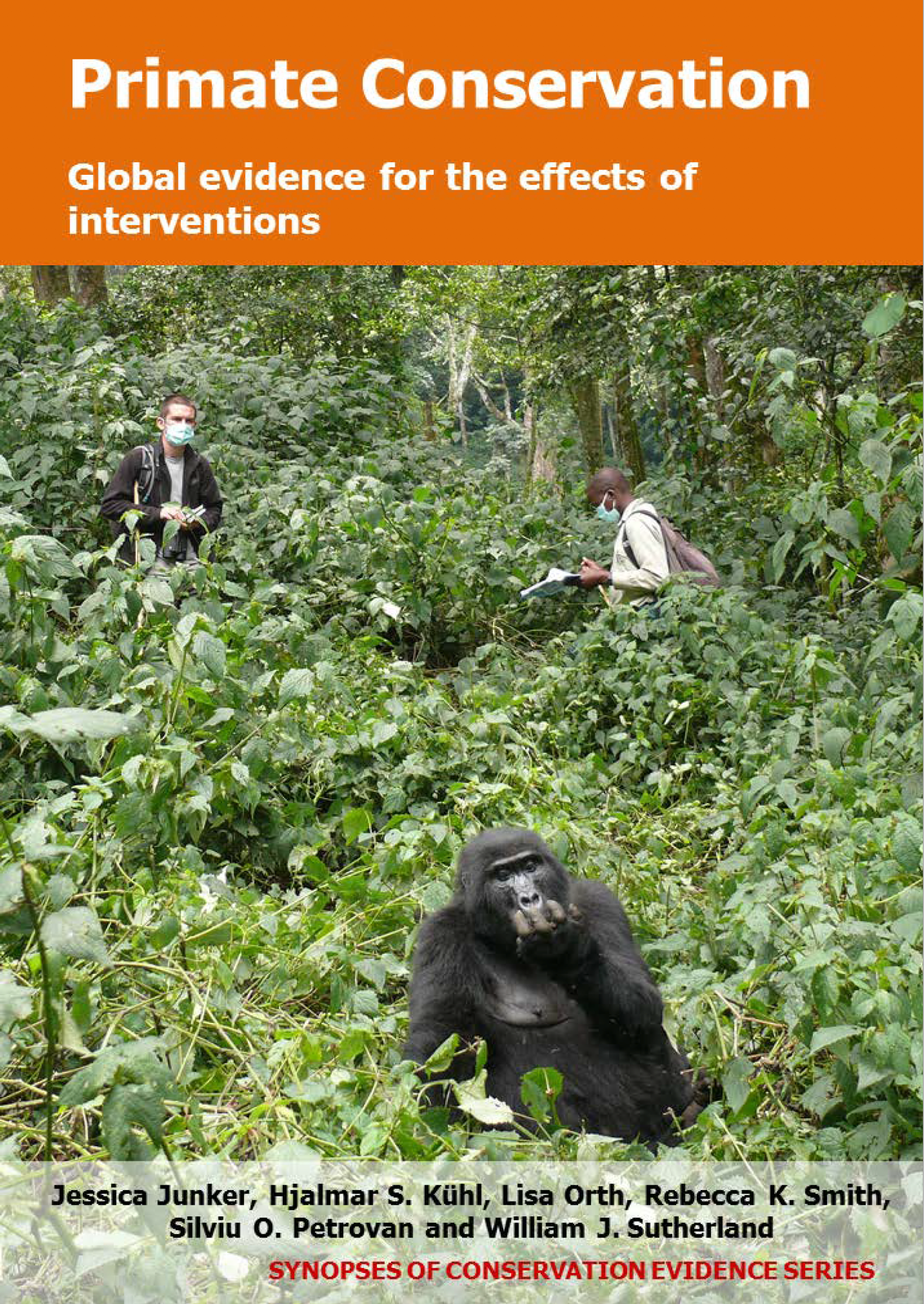Prohibit (livestock) farmers from entering protected areas
-
Overall effectiveness category Unknown effectiveness (limited evidence)
-
Number of studies: 2
View assessment score
Hide assessment score
How is the evidence assessed?
-
Effectiveness
50% -
Certainty
30% -
Harms
0%
Study locations
Supporting evidence from individual studies
A before-and-after, site comparison study in 1976-1988 in tropical forest of the Volcanoes National Park, Rwanda (1) found that the number of immature mountain gorillas Gorilla beringei beringei on the Rwandan side of the park increased and snares decreased after the removal of cattle, along with other interventions. The number of immature individuals increased by 22% on the Rwandan side of the park, but had declined by 30% on the side of the park in the other two countries. However, no statistical tests were carried out to determine whether these differences were significant. Five years after cattle were removed, 30% of sampled quadrats on the Rwandan side of the park contained snares, compared to 70% of the sampled quadrats on the Ugandan and Congolese side. In 1976, all cattle were removed from the park in Rwanda. In 1979, a tourist project was initiated in the same site, which financed training, equipping and management of anti-poaching patrols. A conservation education programme was also implemented, but no further details of this programme were reported in the study. The study does not distinguish between the effects of the different interventions mentioned above.
Study and other actions testedA before-and-after trial in 1967-2008 in tropical forest in Volcanoes, Mgahinga and Virunga National Parks in Rwanda, Uganda, and the Democratic Republic of Congo, respectively (2) found that despite the removal of livestock from the park, along with other interventions, the mountain gorilla Gorilla beringei beringei population decreased over time. Annual population decline was 0.7%, resulting in an overall population decrease of 29% over 31 years. However, no statistical tests were carried out to determine whether this trend was significant or due to natural population fluctuations. Any cattle found by rangers were herded out of the park, confiscated, and their owners fined. Rangers also conducted regular anti-poaching patrols and regularly removed snares. Additional interventions included local conservation education and community development projects. The study does not distinguish between the effects of the different interventions mentioned above.
Study and other actions tested
Where has this evidence come from?
List of journals searched by synopsis
All the journals searched for all synopses
This Action forms part of the Action Synopsis:
Primate Conservation
Primate Conservation - Published 2017
Primate Synopsis





)_2023.JPG)














